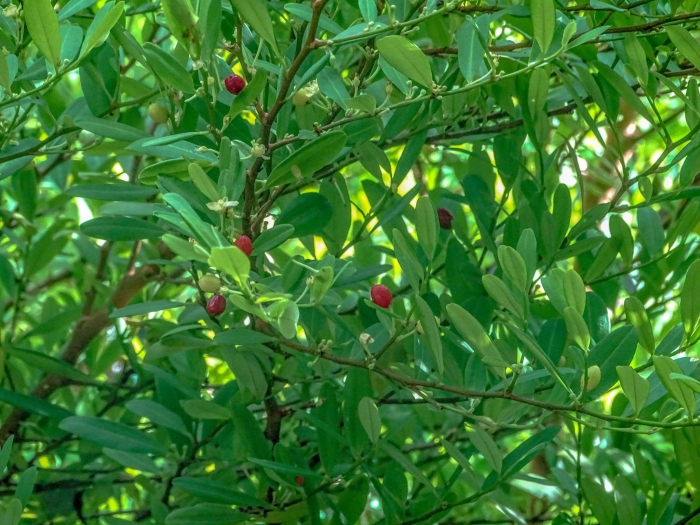Coca Plant
(Erythroxylum coca)
Coca Plant (Erythroxylum coca)
/
/

© Julien Lepage
CC BY 4.0
Image By:
© Julien Lepage
Recorded By:
Copyright:
CC BY 4.0
Copyright Notice:
Photo by: © Julien Lepage | License Type: CC BY 4.0 | License URL: http://creativecommons.org/licenses/by/4.0/ | Uploader: julienlepage | Publisher: iNaturalist |
























Estimated Native Range
Summary
Erythroxylum coca, commonly known as the coca plant, is a perennial shrub native to the montane rainforests of the Andean region in South America, particularly in Bolivia, Peru, and Colombia. It typically grows to a height of 7-10 feet with a similar spread. The plant has thin, oval, evergreen leaves that are bright green in color, and it produces small yellowish-white flowers that are not particularly showy. The flowering season is not well-defined as it can flower throughout the year in its native habitat. E. coca is adapted to high humidity and precipitation levels found in its native montane rainforest ecosystems.
Erythroxylum coca is cultivated for its leaves, which contain alkaloids such as cocaine, traditionally used for their stimulant and medicinal properties. The plant prefers very acidic soil, with a pH range of 3.5 to 5.5, and requires consistent moisture without waterlogging. It is best grown in partial shade to mimic its native understory environment. While it is not commonly grown for ornamental purposes, it has cultural and historical significance in its native regions. In cultivation outside its native range, it is important to be aware of legal restrictions regarding the cultivation of E. coca due to its alkaloid content. Additionally, it has the potential to become invasive in some tropical and subtropical climates, so caution is advised.CC BY-SA 4.0
Erythroxylum coca is cultivated for its leaves, which contain alkaloids such as cocaine, traditionally used for their stimulant and medicinal properties. The plant prefers very acidic soil, with a pH range of 3.5 to 5.5, and requires consistent moisture without waterlogging. It is best grown in partial shade to mimic its native understory environment. While it is not commonly grown for ornamental purposes, it has cultural and historical significance in its native regions. In cultivation outside its native range, it is important to be aware of legal restrictions regarding the cultivation of E. coca due to its alkaloid content. Additionally, it has the potential to become invasive in some tropical and subtropical climates, so caution is advised.CC BY-SA 4.0
Plant Description
- Plant Type: Shrub, Tree
- Height: 5-10 feet
- Width: 3-5 feet
- Growth Rate: Moderate
- Flower Color: White
- Flowering Season: Spring
- Leaf Retention: Evergreen
Growth Requirements
- Sun: Full Sun
- Water: Medium
- Drainage: Medium
Common Uses
Edible*Disclaimer: Easyscape's listed plant edibility is for informational use. Always verify the safety and proper identification of any plant before consumption.
Natural Habitat
Native to montane rainforests of the Andean region
Other Names
Common Names: Coca Shrub, Hayo, Coca Plant
Scientific Names: , Erythroxylum coca, Erythroxylum bolivianum, Erythroxylum chilpei, Erythroxylum peruvianum, Erythroxylum peruvianum,
GBIF Accepted Name: